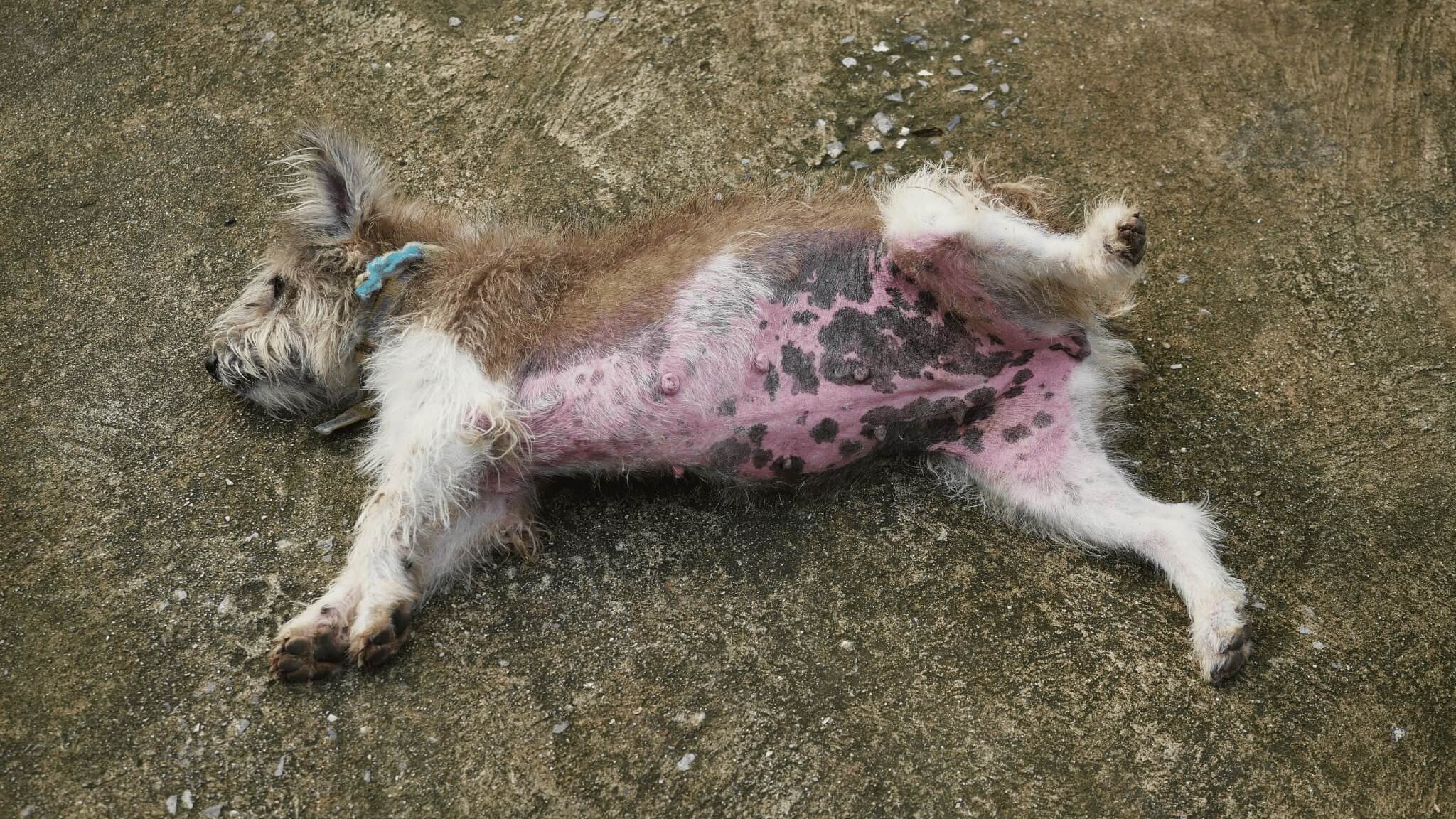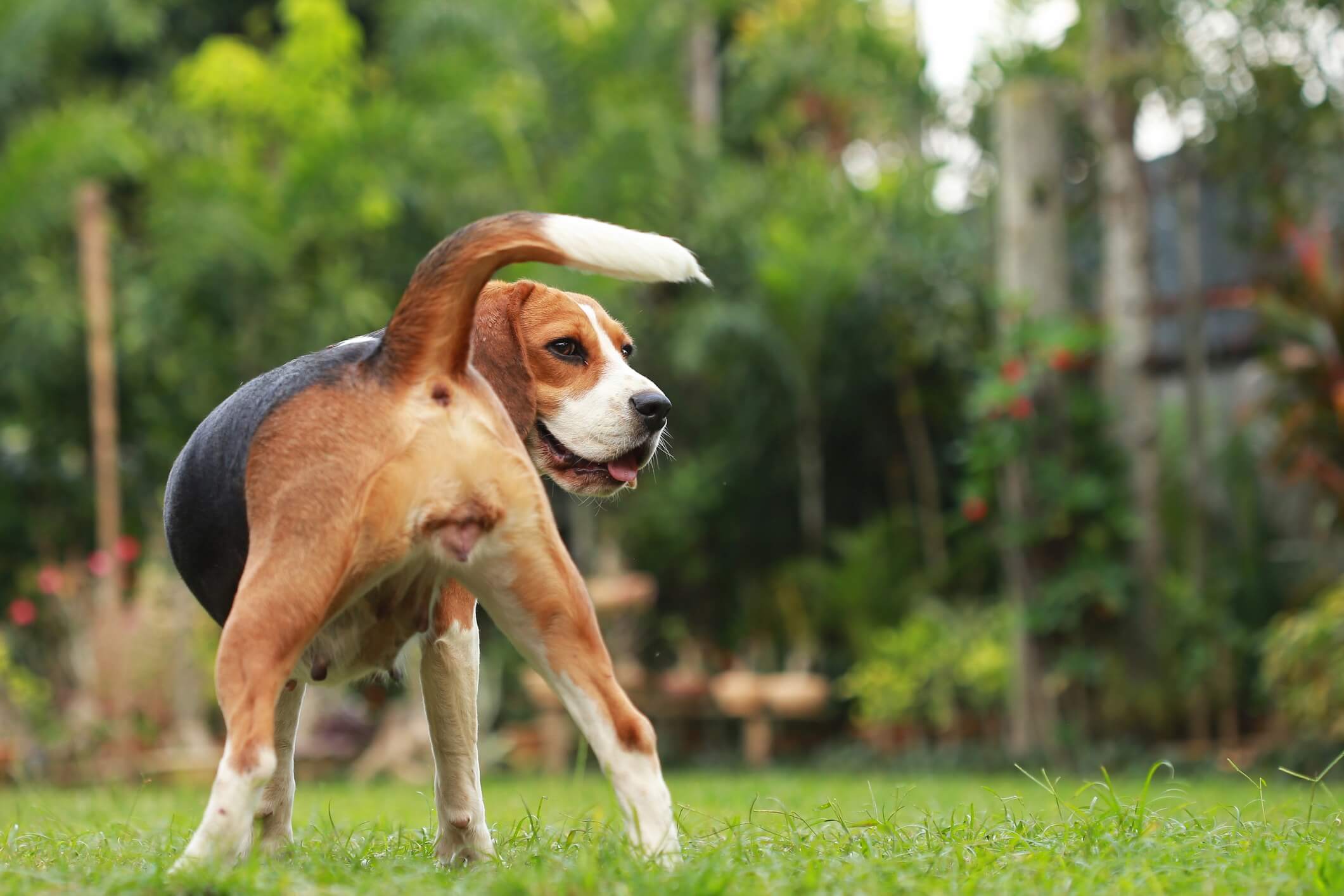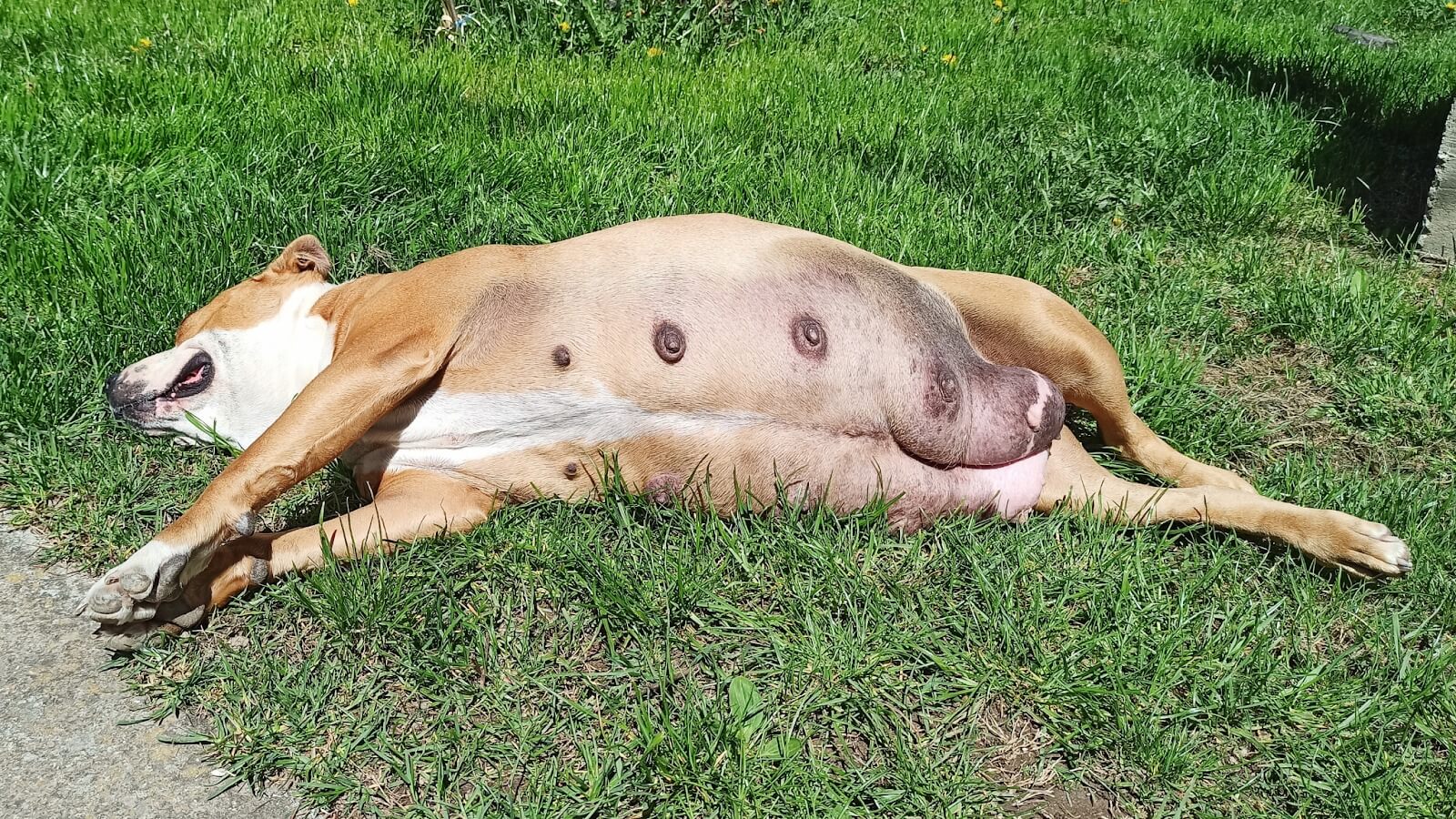What if your dog won’t open one or both of their eyes? Seeing your pup keep one or both eyes shut or squinting can be a worrying sign, as it can indicate an underlying health issue that needs attention. It is natural to seek advice on the possible causes and treatments. In addition, it’s important to know when to seek professional help.
There could be various reasons why a dog won’t open an eye. It could be due to an injury or infection, such as a scratch. It could be a foreign object lodged in the eye, in which case you could clean the eye with a gentle eye-cleaning wipe.
To offer you the best advice possible, we have consulted our expert source, Notes on Veterinary Ophthalmology, by Dr. Sheila M. Crispin. So, read on to learn more about why your dog won’t open one or both eyes and how you can help.
So, Why Won’t My Dog Open Their Eye(s)?
Several potential causes could be behind this issue. It might be due to eye injuries, foreign objects stuck in the eye, or eye infections. Additionally, certain health conditions like bacterial or viral conjunctivitis (pink eye), corneal ulcers, dry eye, glaucoma (pressure increase inside the eye), or allergies could be responsible for eye discomfort.
Before you can help your pup with the problem, you need to identify what is causing it. Some of the causes present familiar symptoms, like pink eye. Other causes are often less obvious.
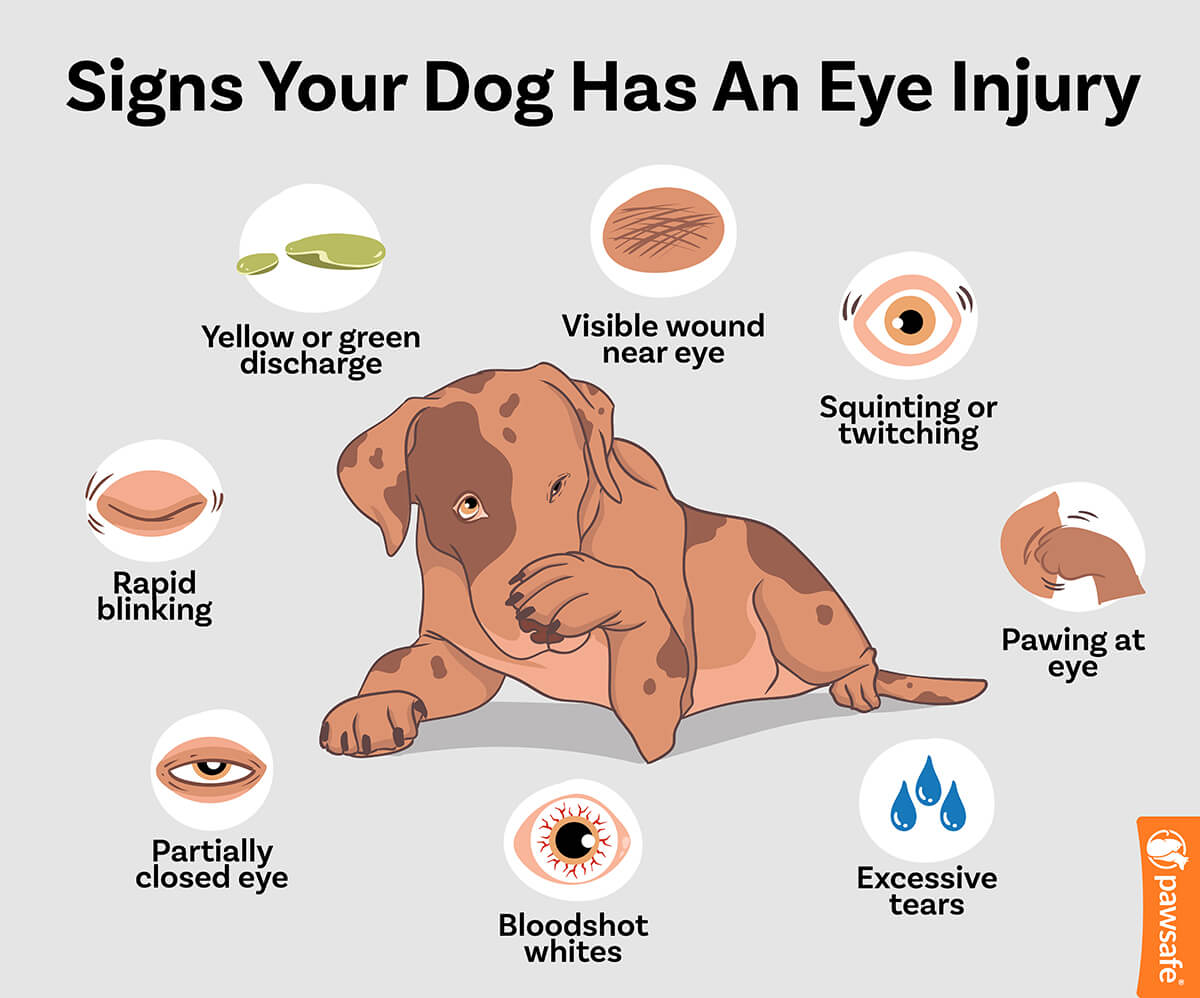
What Are The Most Common Causes For A Dog Squinting Or Not Opening Their Eye?
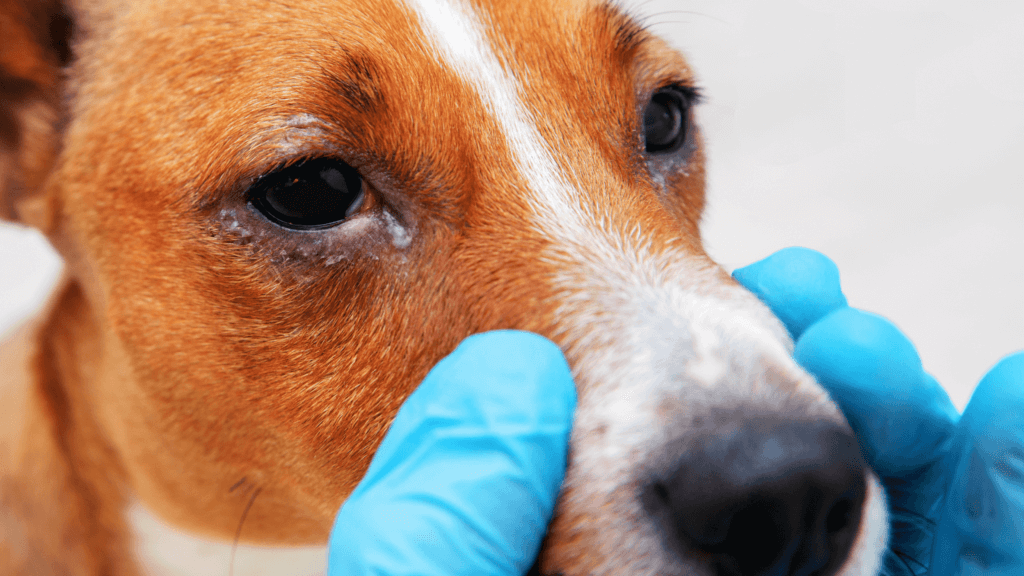
When a dog doesn’t open one or both of their eyes, it can indicate an underlying health issue. There are several reasons why a dog may be experiencing this problem, including:
1. Eye Infections
Eye infections are one of the common causes that can lead to a dog not opening one or both of their eyes. These infections can occur due to bacteria, viruses, or other microorganisms. When a dog’s eye gets infected, it may become red, swollen, and produce discharge.
2. Eye Injuries
Eye injuries can also cause a dog not to open their eye(s). Accidents, scratches, or foreign objects getting into the eye can lead to discomfort and swelling, making it difficult for the dog to open her eye.
3. Dry Eye
Dry eye, also known as keratoconjunctivitis sicca, is a common condition in dogs that can lead to squinting or the persistent closure of one or both eyes. It occurs when there is insufficient tear production or a poor-quality tear film, resulting in inadequate lubrication and moisture for the eye surface.
This can be caused by various factors, including autoimmune diseases, congenital abnormalities, certain medications, or damage to the tear glands. Dry eye can lead to discomfort, redness, inflammation, and even corneal ulcers if left untreated, making it essential for pet owners to seek veterinary care if they observe their dog exhibiting these symptoms.
4. Allergies
Dog eye allergies can be another reason a dog won’t open their eyes (s). Dogs can develop allergies to environmental factors like pollen, dust mites, or certain foods. When an allergen comes into contact with a dog’s eyes, it can cause itching, redness, and swelling, making your dog reluctant to open their eyes.
5. Uveitis
Uveitis, an inflammation of the uvea, the middle layer of the eye, is a condition that can lead to significant discomfort and prevent a dog from being able to open their eye properly. This ocular disorder is relatively common in dogs and can occur as a primary condition or as a secondary response to other underlying health issues.
Symptoms of Uveitis:
Identifying uveitis in dogs can be challenging as the symptoms may vary depending on the severity and the affected structures within the eye. However, some common signs to look out for include:
- Eye Redness: The affected eye may appear red or bloodshot due to the inflammation of the uvea and surrounding tissues.
- Squinting or Blinking: Dogs with uveitis often squint or keep their eye closed due to the pain and sensitivity to light caused by the inflamed structures.
- Tearing and Discharge: Increased tear production and ocular discharge can occur, leading to tear-stained fur around the eye.
- Cloudiness: The eye may appear cloudy or hazy due to the presence of inflammatory cells or debris in the aqueous or vitreous humor.
- Change in Eye Color: In some cases, uveitis can cause the iris to change color or become mottled.
- Rubbing or Pawing at the Eye: Dogs may exhibit signs of discomfort by rubbing or pawing at the affected eye.
- Vision Changes: As uveitis progresses, it can lead to blurred vision or even partial loss of vision if left untreated.
Causes of Uveitis:
Uveitis can have various underlying causes, which may include: infections, trauma, autoimmune issues, systemic diseases like Lyme Disease, and toxins or allergies.
6. Conjunctivitis
Conjunctivitis or pink eye occurs when the thin tissue lining the eyelid becomes inflamed. This inflammation leads to redness, discharge, and irritation in the eye, making it uncomfortable for the dog to open their eye. Research shows that bacterial or viral infections, allergies, or other irritants can cause conjunctivitis.
7. Glaucoma
Glaucoma is a condition that causes increased pressure within the eye, which can lead to pain and discomfort. As a result, the dog may keep their eye closed to reduce the discomfort. Glaucoma is really several different diseases and can be primary (genetic) or secondary (due to other eye issues or health conditions).
8. Corneal Ulcers
A corneal ulcer is a painful open sore or abrasion on the clear outer layer of the eye called the cornea. Dogs can develop corneal ulcers for various reasons, such as scratches from foreign objects, eye infections, or trauma. The discomfort and sensitivity caused by the ulcer may lead the dog to keep their eye closed to protect it from further damage.
9. Eyelash and Eyelid Abnormalities
Abnormalities can include conditions like entropion, where the eyelid rolls inward, causing the lashes to rub against the eye’s surface, leading to irritation and discomfort. Conversely, ectropion is when the eyelid turns outward, exposing the eye’s sensitive tissues and causing dryness or inflammation.
Dogs can also have a variety of eyelash issues that irritate the eye and cause infections, causing them to keep an eye shut or squint.
To learn more, check out our article on decoding canine eyelid bumps.
10. Blepharitis
Blepharitis is a condition characterized by inflammation of the eyelids. Bacterial or fungal infections, allergies, or underlying skin conditions can cause it. The inflamed eyelids may become swollen, red, and itchy, leading the dog to keep their eyes closed to avoid further discomfort.
11. Keratitis
Keratitis is inflammation of the cornea, the clear outer layer of the eye. Infections, injuries, or underlying health issues can cause it. The inflamed cornea can become sensitive to light and touch, leading the dog to keep their eye closed to minimize discomfort.
12. Inflammation of the Tear Sac (Dacryocystitis)
Dacryocystitis is when the tear duct, which carries tears from the eye to the nose, becomes inflamed or blocked. That can lead to the accumulation of tears in the tear duct, causing pain and discomfort. Symptoms of dacryocystitis include redness, swelling, and discharge.
13. Photophobia
When a dog experiences photophobia, bright light can cause discomfort and pain in the eyes, leading the dog to keep their eyes closed to avoid intense light. Various factors, such as eye infections, corneal injuries, inflammation, or certain health conditions, can cause photophobia.
14. Eye Worm Disease
Also known as ocular thelaziasis, it occurs when a dog becomes infested with parasitic eye worms. These worms can be transmitted through the bites of infected flies or in other ways. When eye worms infest the dog’s eyes, they can cause irritation, redness, and excessive tearing.
15. Underlying Illness
Dogs with fever or systemic infections may experience eye redness or swelling, leading them to keep their eyes closed. Additionally, certain diseases, such as canine distemper, diabetes, or autoimmune disorders, can cause eye-related complications, affecting the dog’s ability to open their eyes normally.
In particular, studies show that diabetes mellitus is associated with ocular disease, so if your dog has diabetes, be sure to keep an eye on eye health.
Symptoms to Look Out For When A Dog Won’t Open Their Eye(s)
When a dog doesn’t open their eye(s), there can be various symptoms to look out for, indicating different underlying causes. Observing these signs and seeking veterinary attention is essential to diagnose and treat the issue effectively.
- Eye redness: Redness in or around the eye can indicate inflammation or irritation, potentially caused by eye infections, allergies, or injuries.
- Swelling: Swelling of the eyelids or the area around the eye may indicate an allergic reaction, infection, or other underlying issues.
- Discharge: Excessive tearing or abnormal discharge from the eye can suggest an infection, such as conjunctivitis or dacryocystitis.
- Squinting or blinking: If the dog frequently squints or blinks, it may indicate pain or discomfort in the eye, resulting from injuries, corneal ulcers, or photophobia.
- Excessive tearing: Continuous tearing, also known as epiphora, can result from blocked tear ducts or other eye-related conditions.
- Cloudy or hazy appearance: A cloudy or hazy appearance in the eye can be a sign of cataracts or other serious eye disorders.
- Avoidance of light: Photophobia, or light sensitivity, may cause the dog to shy away from well-lit areas or squint when exposed to bright light.
- Unusual eye movements: Rapid or abnormal eye movements can indicate neurological issues or eye problems.
- Rubbing or pawing at the eye: Dogs may attempt to relieve discomfort by rubbing or pawing at their affected eye(s) or rubbing their eye on the carpet.
- Changes in eye color: A change in eye color or appearance (such as redness, yellowing, or milkiness) can indicate various health conditions, such as glaucoma or uveitis.
- Closed or half-open eye(s): If the dog frequently keeps their eye(s) closed or partially open, it could be due to pain, irritation, or infections.
- Visible foreign objects: If you can see any foreign objects stuck in the eye or on the eyelids, they need to be removed safely by a veterinarian.
- Changes in behavior: Dogs experiencing eye trouble may exhibit behavioral changes, such as increased restlessness or reluctance to play.
What To Expect At The Vet
During the veterinary visit, the veterinarian will examine the dog’s eye and may perform tests to determine the underlying cause. Depending on the diagnosis, treatment may involve medications, surgery, or other interventions.
It is important to note that some eye conditions, such as glaucoma or corneal ulcers, can progress rapidly and lead to irreversible vision loss. Therefore, prompt veterinary attention is crucial for the best possible outcome.
Diagnosis and Treatment When A Dog Won’t Open Their Eye
Physical Examination
When a dog is brought to a veterinarian with an eye problem, the first step is to conduct a physical examination. That involves a thorough inspection of the eye and surrounding area and an assessment of the dog’s overall health.
The veterinarian will look for signs of inflammation, discharge, or other abnormalities in the eye, as well as any changes in the dog’s behavior or appearance that may indicate a problem.
Medical History
The next step in diagnosing and treating an eye problem in a dog is to take a detailed medical history. The veterinarian will ask questions about the dog’s diet, exercise routine, and any recent changes in behavior or environment that may contribute to the problem.
They may also ask about any previous eye problems or medical conditions the dog has experienced.
Treatment Options When A Dog Can’t Open Their Eye
Once a diagnosis has been made, the veterinarian will discuss treatment options with the dog’s owner. Depending on the severity of the problem, treatment may involve medication, surgery, or other interventions.
Sometimes, the dog may need a referral to a specialist for further evaluation and treatment.
Some common treatments for eye problems in dogs include:
- Antibiotics or other medications to treat infections or inflammation.
- Eye drops or ointments to lubricate the eye or reduce inflammation.
- Surgery to remove foreign objects or repair damage to the eye.
- Lifestyle changes, such as adjusting the dog’s diet or exercise routine, to prevent future eye problems.
- Sometimes (in extreme cases) your vet may recommend removing the affected eye(s).
Overall, the key to successfully treating eye problems in dogs is to identify the underlying cause of the problem and develop a targeted treatment plan. With the right diagnosis and treatment, most dogs can recover from eye problems and enjoy good vision and overall health.
Preventive Measures
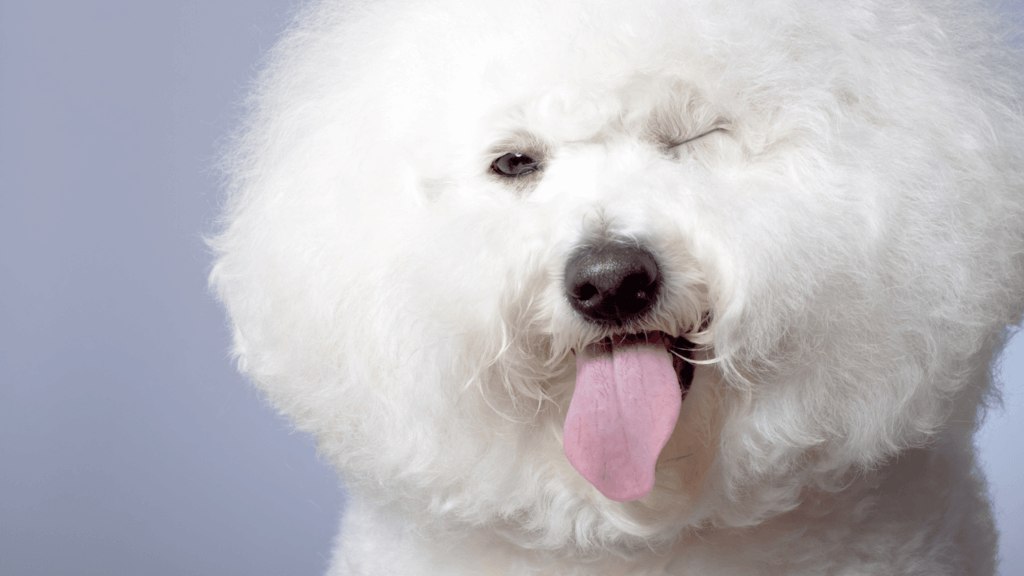
To avoid eye problems in dogs, there are several preventive measures that pet owners should take.
- Keeping the dog’s eyes clean and free from dirt and debris is important. Regularly wiping the area around the eyes with a damp cloth can help prevent irritation and infection.
- It is crucial to provide proper nutrition to the dog. Feeding them a balanced diet with essential vitamins and minerals can help maintain overall eye health.
- Pet owners should be mindful of their dog’s environment. Protecting the dog from hazards like sharp objects or chemicals can help prevent eye injuries.
- Taking the dog for regular check-ups with a veterinarian is recommended. That can help identify potential eye problems early on and prevent them from becoming more serious.
- Spotting symptoms early can make all the difference. If you notice a gunky eye, or that your pup is blinking more often, consider a preemptive visit to the vet. For more on winking, read our article, ‘why does my dog wink at me?’
- Lastly, avoiding exposing the dog to excessive sunlight is important, as this can lead to eye damage. Providing shade and using dog-specific sunglasses can help protect their eyes from harmful UV rays.
Pet owners can help ensure their dog’s eyes stay healthy and avoid any potential eye problems by taking these preventive measures.
Frequently Asked Questions (FAQs)
Why is my dog holding one eye shut?
What to do if your dog’s eye is red and they can’t open it?
How do you flush a dog’s eye?
How can I treat my dog’s eye infection at home?
What causes a dog to squint both eyes suddenly?
Why is my dog squinting both eyes?
Final Thoughts
In conclusion, immediate veterinary care is crucial if a dog is not opening one or both of their eyes. The underlying cause can range from minor irritations to serious medical conditions that may lead to permanent damage or blindness.
Pet owners should be vigilant for accompanying symptoms like discharge, redness, swelling, and squinting, which aid in accurate diagnosis and proper treatment by veterinarians.
By being proactive and seeking prompt veterinary care, pet owners can ensure their dogs maintain healthy eyesight and a happy, comfortable life.




